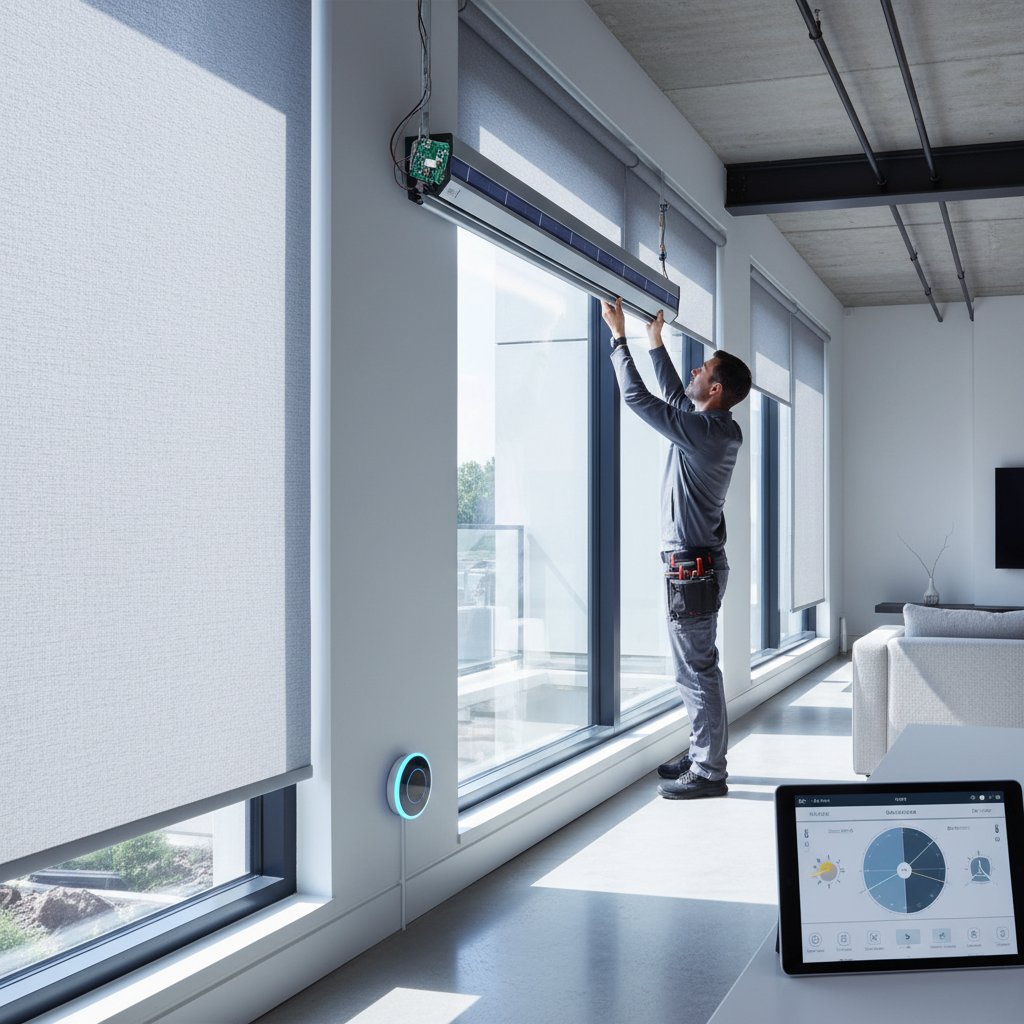Smart Blinds Adjust Automatically to Beat the Heat
Smart homes evolve from basic conveniences into intelligent spaces that respond to daily habits, comfort preferences, and external weather conditions. Practical innovations like smart blinds, which are automated shading systems, adjust positions to sustain optimal indoor temperatures. These systems extend beyond luxury; they promote energy efficiency, enhance daily comfort, and enable effortless climate management.
Smarter Light, Smarter Comfort
Manual blinds demand constant adjustments, allowing direct sunlight to warm rooms excessively before users intervene. Smart blinds address this issue through integration with sensors, mobile applications, and broader smart home networks. They deploy or retract based on sunlight intensity, ambient room temperature, or predefined schedules. Consider starting the day with soft morning illumination while preventing intense afternoon rays from overheating living areas.
Research from the industry indicates that automated shading reduces cooling expenses by up to 25 percent, especially in regions with high temperatures. These blinds block solar heat gain at the source, easing the workload on air conditioning units. The outcome includes decreased energy consumption and a more stable indoor climate throughout the day.
How They Work
Core components include light and temperature sensors linked to motorized mechanisms. Many models pair with voice-activated assistants or central climate hubs for coordinated operation. During peak solar exposure, blinds lower to cut glare and heat entry. As temperatures drop, they raise to permit natural light and warmth.
Advanced configurations incorporate geolocation to monitor the sun's path across the sky. Blinds then angle precisely to optimize comfort without excessive dimming. This approach achieves equilibrium among natural daylight, occupant privacy, and thermal regulation.
Key Benefits for Everyday Living
1. Energy Efficiency
Automated shading lessens reliance on air conditioning in warmer seasons. By halting unnecessary heat influx, smart blinds stabilize indoor temperatures with minimal effort. Long-term use yields measurable reductions in utility expenses, often amounting to hundreds of dollars annually depending on home size and location.
2. Enhanced Comfort
Direct sunlight disrupts focus during work sessions or rest periods with unwelcome warmth. Smart blinds respond to light variations in real time, preserving a pleasant environment. Rooms remain inviting without manual oversight.
3. Privacy on Demand
These systems adjust according to time of day or detected occupancy. Blinds close at dusk to secure interiors automatically. Users avoid traversing multiple rooms to manage visibility.
4. Seamless Integration
Compatibility with established smart home platforms simplifies control. Operate blinds via smartphone interfaces, voice directives, or automated sequences tied to lights and thermostats. Such connectivity fosters a unified, responsive living space.
Real-World Examples
Leading manufacturers produce motorized blinds that synchronize with smart thermostats for peak efficiency. Retrofitting options allow motors to upgrade existing shades without full replacement. Install a small, wireless motor unit connected through Bluetooth or Wi-Fi to command light modulation from anywhere.
These setups adhere to universal smart home protocols, enabling routines that align with other devices. Activate a command like preparing for relaxation, and blinds descend alongside light adjustments to create an immersive setting instantly.
Overcoming the Barriers
Initial costs and setup complexities once deterred adoption, yet improvements have addressed these challenges. Basic models now cost under $200 per window and install in minutes without electrical work. Rechargeable batteries and wireless links streamline the process for most users.
Sophisticated versions offer robust ties to energy monitoring tools and automation centers. For privacy, contemporary designs process data locally with limited cloud reliance. Companies disclose handling practices clearly, fostering confidence in these interconnected devices.
A Glimpse Into the Future of Home Shading
Upcoming advancements will incorporate machine learning to adapt to individual patterns. Blinds may predict adjustments based on past behaviors, preempting discomfort. Pairing with weather APIs could enable preemptive shifts for incoming heat waves or overcast periods.
This technology contributes to responsive architecture, where residences adapt dynamically like organic entities. Principles applied to blinds today may influence tint-shifting glass or ventilated roofing in tomorrow's designs.
Upgrade Your Home with Smart Shading Solutions
Smart blinds extend value beyond summer cooling; they cultivate thoughtful, efficient residences. The combination of ease, livability, and eco-friendliness positions automated shading as a worthwhile investment.
Homeowners ready for enhancement should begin with one area to assess impact. Witness the shift in comfort levels firsthand, then scale implementation across additional spaces for comprehensive benefits.
